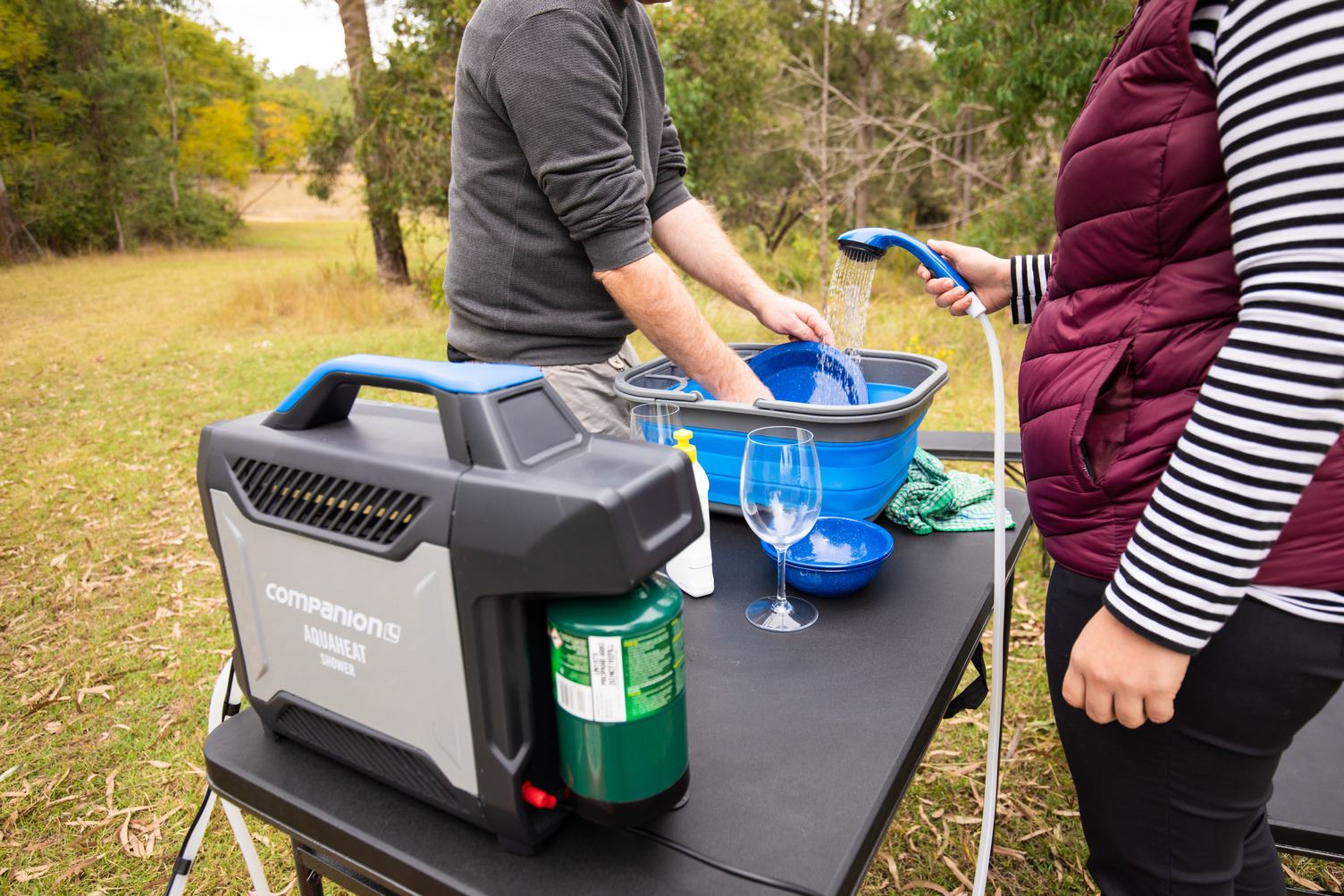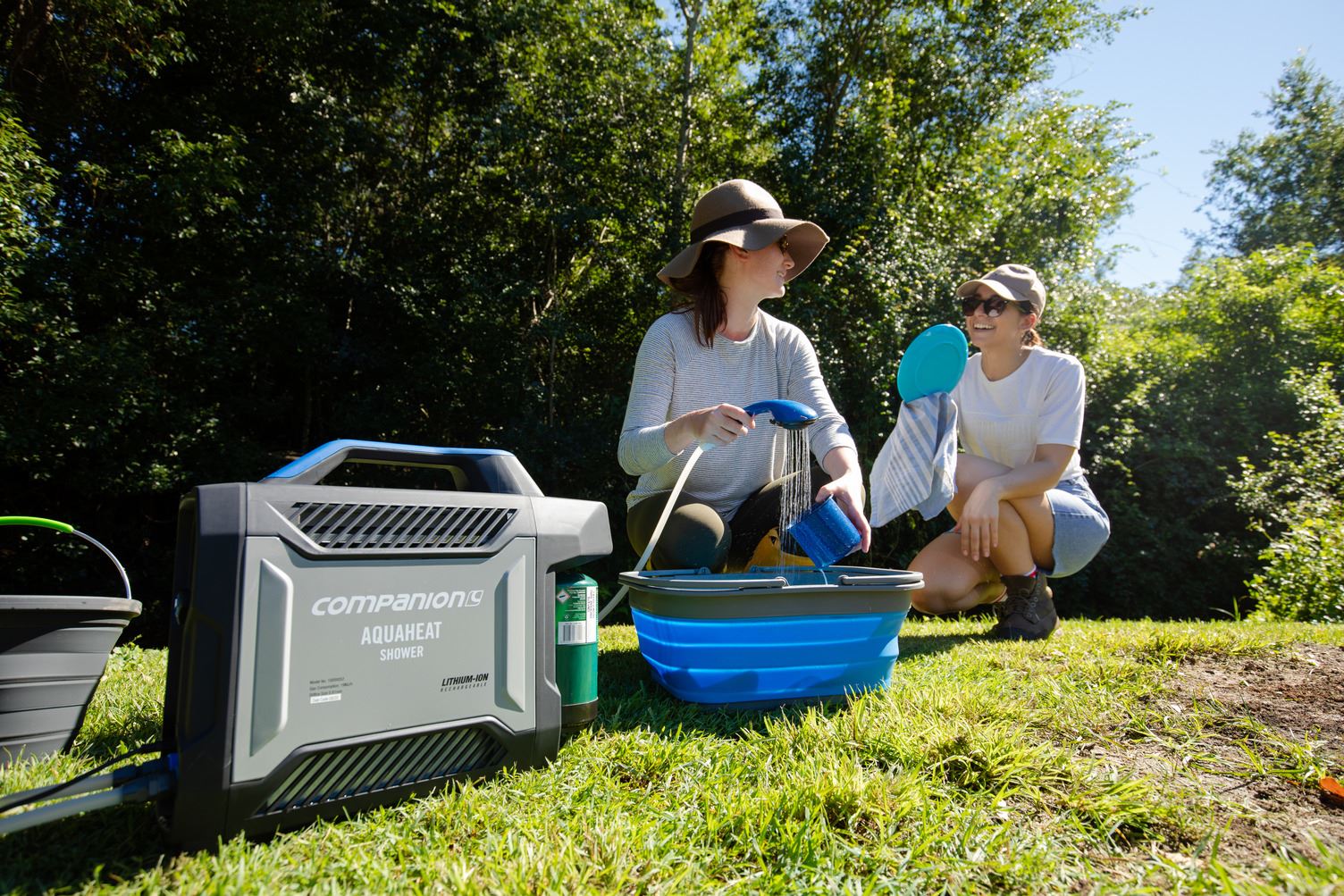
When you're camping, no one wants to do the dishes. It can be both a dreaded task and a perplexing challenge at the same time. Dishes can be a tremendous hassle to do while camping because there is no dishwasher, no sink, and little water. Regardless, it must be completed. So, how do you wash dishes camping? We are particularly sensitive to this issue because few people despise doing dishes as much as we do. The key is to create a system. While doing dishes will never be enjoyable, with the appropriate information and a few pieces of equipment, it can be made to be as inconvenient as possible.
Use the authorised dishwashing facilities and drain water basins if the campground you're staying at offers them. However, the majority of campgrounds do not. Do not wash your dishes in the bathroom sink or at the faucet where you get your drinking water. Food waste cannot be handled in these regions since they are not equipped for it. You should plan on doing the majority of your dishwashing at your campsite. We'll walk you through a full step-by-step procedure for doing so below. To set up a camping dishwashing station, you'll need the following items. First of all, our biggest tip is to bring camping cookware with you instead of heavy ceramic plates. Camping plates and mugs are designed to be light and easy to clean so if you don't already have a set for the next trip we highly recommend stocking up on some of our favourite designs.
Washing dishes at your campsite:
Sinks — These can be collapsible camping sinks, nestling plastic bins, or just standard mixing buckets. It makes no difference what they are as long as they contain water and can accommodate your dishes. If you're the type that needs a sturdy table, or something that resembles your kitchen at home, try a camp kitchen. They are better suited to long term stays but they do really make doing the dishes a breeze.
Sponge or brush — Either will do, but you'll need something to scrub off any caked-on food that has stuck to your plate. We use a particular swatch of steelwool for cast iron.
Biodegradable Soap - Regular dish detergent can be extremely harmful to the environment, so choose for biodegradable soap instead. To break down correctly, biodegradable soap requires bacteria in the soil. Keep it at least 200 feet away from any natural water source, or it will have the same effect as detergent.
Dish rack - if you have the space, leaving your dishes to dry overnight is a great way to save time drying every one of them. Worth the extra space in our opinion.
Metal Strainer - To separate solid food wash from your grey water, you'll need a strainer.
Chamois Cloth - A extremely absorbent cloth to speed up the drying time.
How Do You Wash Dishes When You're Camping?
Making the correct quantity of food and finishing what's on your plate makes cleaning up a breeze. Before the meal, make sure you get an accurate assessment of everyone's hunger level so you can figure out how much to cook.
2. Prepare the dishes
Remove as much food as possible from your dishes once you've finished your meal. It will be easier to clean the dishes if you can scrape as much food (and sauce) into the rubbish as possible. Before putting your plate in the dishwasher, clean it as much as possible with utensils or a single sheet of paper towel.
3. The Three Buckets
This method cleans your dishes and kitchenware as thoroughly as possible while conserving water. We use collapsible buckets, but you could also use plastic bins that are less expensive. We also strongly advise cleaning with warm water, since it makes the entire procedure easier and more fun. A simple way to produce anything near to warm water temperature, we boil a pot of water and then cut it with cold water. If this doesn't sound like something you want to do after eating dinner or when you are half asleep in the morning, make room for something like the Aquaheat. A portable hot water system from Companion that only requires propane and works of a built in lithium battery. Great for instant hot showers and sparkling clean dishes, we use it every day whilst camping.

Fill the wash sink about a quarter full with warm water and a few drops of biodegradable soap. Begin with the cleanest dishes and work your way to the dirtier ones last. Shake off any extra suds into the sink and move on to the next step after the object is completely clean.
Rise Sink - Fill this sink with warm water up to a quarter of the way. When the dishes are finished in the wash sink, they are submerged in the water in the rinse sink. Return the dishes to the wash sink if they aren't completely clean or have a lot of suds on them. The plates should be fully soap-free after this rinse step.
Sanitize Sink - Fill this sink to a quarter capacity with warm water and your sanitising agent (the amount may vary depending on how much water you use; the basic rule is 2 teaspoons bleach or 1 tablet: 1 litre water). Dishes that have been rinsed should be soaked briefly in this sanitising bucket. While the soap removes food particles from the dishes, the bleach water disinfects them thoroughly. If your cookware, cutting boards, knives, or other items came into touch with raw meat at any point, this step is very crucial. This final cleaning step may not be as important if you have a bowl of vegetarian chilli for dinner.
4. Dry with a towel
Before putting the dishes away, towel them dry with a hyper-absorbent shammy when they come out of the sanitising bucket. It may be tempting to air dry plates, but we've found that doing so simply prolongs the process. Dry your plates by hand so you can get back to enjoying the outdoors sooner.
5. Look for more soiled dishes
When you've done washing the last dish, double-check that it was indeed the last dish. Nothing is more aggravating than discovering that someone forgot to bring their plate over after you've already torn down everything and dumped your water. Make sure you have all of the necessary cookware. (We've frequently cleaned everything only to realise we'd forgotten the pot in which we'd cooked everything!)
6. Grey water
It's time to consolidate your grey water once you're certain there are no more dishes. Pour the contents of the sanitise sink into the rinse sink. The rinse sink should then be dumped into the wash sink.
7. Remove any food scraps
Fill one of the empty sinks with water and strain it through a large metal strainer. This will separate all of the small food particles that escaped during the washing process. Fill your rubbish can with the solid debris from the strainer.
8. Grey water Disposal
You should now have a sink with all of your grey water in it. If you're at a campground with drain water basins (which will be clearly marked), take advantage of them. If not, the easiest technique to dispose of greywater is to distribute it over a big region (basically spraying it). At least 100m away from any water source, this should be done. Spreading the grey water over a vast surface area reduces its influence in a single location and allows it to quickly absorb into the soil.
For more camping essentials and ways you can wash dishes whilst camping check out our camping category.


.png)
Leave a comment